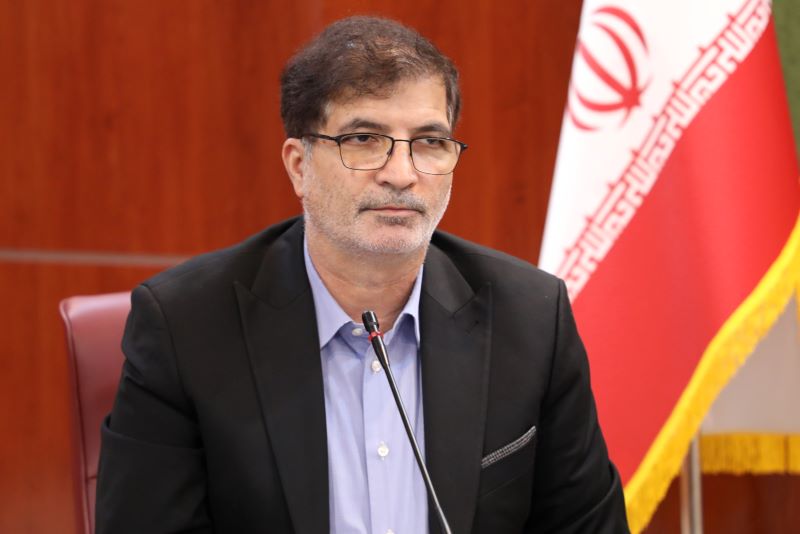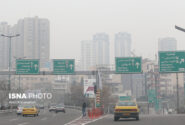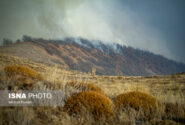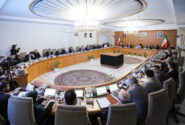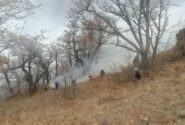با وجود پیامدهای فرامرزی، میاننسلی و قابلسنجش، این موضوع هنوز در برنامهها، سیاستهای اقلیمی و سامانههای هشدار اولیه بینالمللی جایگاهی ندارد. فناوریهای پیشرفته رصد از راه دور—مانند تصاویر ماهوارهای Sentinel و Landsat یا ابزارهای تحلیل پوشش گیاهی—امکان شناسایی دقیق آتشسوزیها، نشتگازها و نابودی زیستگاهها را فراهم کردهاند.
با این حال، هیچ چارچوب بینالمللی بیطرف و منسجمی برای ثبت و تحلیل پیامدهای زیستمحیطی جنگها وجود ندارد. حتی در مواردی مانند: تخریب بیش از ۹٬۰۰۰ هکتار ازمناطق حفاظتشده در ایران طی جنگ ۱۲روزه اخیر (منبع: سازمان حفاظت محیطزیست، تیر ۱۴۰۴) انفجار پالایشگاهها و انتشار آلایندهها آلودگی منابع آب و خاک و برهمخوردن تعادل زیستبومی در سطح منطقهای این خلأ نه بهدلیل نبود فناوری، بلکه بهدلیل نبود یک سازوکار مؤثر و مسئولیتپذیر بینالمللی است.
در این یادداشت، اصطلاح «تجاوز اقلیمی» (climate aggression) برای توصیف هرگونه اقدام نظامی—عمدی یا غیرعمدی—بهکار میرود که باعث تخریب گسترده و ماندگار طبیعت شود، بهگونهای کهآثار آن به نسلهای آینده نیز برسد و از مرزهای سیاسی فراتر رود. این اصطلاح، ابزار مفهومیست برای برجستهسازی یک خلأ ساختاری و اخلاقی در ادبیات اقلیمی موجود—جایی که اقلیم، قربانی بیصدا و بینمایندهینظام حقوق بینالملل است.
اسنادی مانند: کنوانسیون ENMOD (۱۹۷۶) پروتکل اول الحاقی کنوانسیون ژنو (مواد ۳۵ و ۵۵) ماده ۸ اساسنامه دیوان کیفری بینالمللی (ICC) اگرچه بهطور کلی تخریب محیطزیست در جنگها را ممنوع کردهاند، اما هیچیک از این اسناد: سازوکار نظارتی فعال و بیطرف ندارند، توان واکنش فوری در لحظه بحران را فراهم نمیکنند و اغلب تحت فشارهای سیاسی اجرایی نمیشوند. در نتیجه، هیچ نهاد بینالمللی موظف نیست در زمان جنگ، وضعیت زیستمحیطی را ثبت یا اعلام کند. برای پر کردن این خلأ، پیشنهاد میشود گفتوگویی جهانی برای تشکیل ائتلافی چندجانبه آغاز گردد که مستقل از ساختارهای دارای حق وتو فعالیت کند، با مأموریت نهادهایی چون UNFCCC، UNEP و ICRC همراستا باشد، و با مشارکت دولتها، دانشگاهها، سازمانهای فنی مستقل و مراکز دادهبرداری ماهوارهای شکل گیرد.
هدف این ائتلاف، نه قضاوت سیاسی، بلکه ثبت علمی و اخلاقی اثرات زیستمحیطی جنگهاست گامی برای شفافیت، پاسخگویی و عدالت اقلیمی. در این چشمانداز، یک چارچوب مفهومی اولیه با عنوان Emergency Climate Response Mechanism (ECRM) میتواند آغازگر گفتوگویی جدید باشد.
این ایده، سازوکاری برای واکنش فوری در شرایط جنگی است: یعنی ثبت سریع، هشدار، و اطلاعرسانی جهانی دربارهی آسیبهای اقلیمی ناشی از درگیریها—تا اقلیم، همانند انسان، در شرایط اضطراری، صاحب صدا و دیدهبانی باشد. تخریب زیستمحیطی ناشی از جنگها فقط مسئلهای فنی نیست؛ بلکه تهدیدی است برای منطق جهانی، تعادل طبیعت و آیندهی نسلهای بعد.
نادیدهگرفتن این بُعد، میتواند تلاشهای جهانی برای عدالت اقلیمی را از درون تهی کند. جامعهی بینالمللی دیگر نمیتواند نسبت به جنگ صرفاً بهعنوان یک موضوع امنیتی یا سیاسی نگاه کند. تخریب اکوسیستمها در اثر جنگ، تهدیدی واقعی برای پایداری اقلیم، سلامت جهانی و حق نسلهای آینده است. نادیدهگرفتن این صدا، نهتنها کارآمدی نهادهای بینالمللی را زیر سؤال میبرد، بلکه خطر بیاثر شدن تلاشهای چندینساله برای عدالت اقلیمی را نیز افزایش میدهد.
نشست COP۳۰ فرصتی تاریخی برای طرح این مسئله و آغاز یک فرآیند چندجانبه برای جبران این خلأ است. اگرچه ممکن است این صدا در میان دستورکارهای فنی و مالی گم شود، اما میتواند سنگبنای ائتلافی جهانی برای پیوند صلح، اقلیم و پایداری محیطی در قرن بیستویکم باشد.
TEHRAN – As the COP30 summit in Belém approaches, a fundamental gap in the global climate governance system once again becomes apparent: the environmental damage caused by armed conflicts.
Despite transboundary, intergenerational, and measurable consequences, this issue still holds no place in climate agendas, policies, or international early warning systems. Advanced remote sensing technologies—such as Sentinel and Landsat satellite imagery or vegetation analysis tools—have enabled precise identification of fires, gas leaks, and habitat destruction.
However, there is no impartial and coherent international framework for documenting and analyzing the environmental impacts of wars. Even in cases like: the destruction of over 9,000 hectares of protected areas in Iran during the recent 12-day war (Source: Department of Environment, July 2024), the explosion of refineries and the release of pollutants, the contamination of water and soil resources, and the disruption of ecological balance at a regional level, this void exists not due to a lack of technology, but due to the absence of an effective and accountable international mechanism.
In this note, the term “climate aggression” is used to describe any military action—intentional or unintentional—that causes widespread and lasting damage to nature, such that its effects reach future generations and extend beyond political borders.
This term serves as a conceptual tool to highlight a structural and ethical gap in existing climate literature, where the climate is a silent and unrepresented victim of the international legal system. Documents such as: the ENMOD Convention (1976), the First Additional Protocol to the Geneva Conventions (Articles 35 and 55), and Article 8 of the Rome Statute of the International Criminal Court (ICC), while generally prohibiting environmental destruction in wars, none of these documents: possess an active and impartial monitoring mechanism, provide the capacity for immediate response at the moment of crisis, and are often not implemented due to political pressures. Consequently, no international body is obligated to document or declare the environmental status during wartime.
To fill this void, it is proposed that a global dialogue be initiated to form a multi-stakeholder coalition that: operates independently of structures with veto power, aligns with the missions of bodies such as UN Framework Convention on Climate Change (UNFCCC), UN Environment Program (UNEP), and International Committee of the Red Cross (ICRC), and is formed with the participation of governments, universities, independent technical organizations, and satellite data centers. The goal of this coalition is not political judgment, but the scientific and ethical documentation of the environmental impacts of wars—a step towards transparency, accountability, and climate justice.
In this perspective, an initial conceptual framework titled the Emergency Climate Response Mechanism (ECRM) can initiate a new dialogue. This idea represents a mechanism for rapid response in wartime conditions: meaning swift documentation, early warning, and global notification of climate damages resulting from conflicts—so that the climate, like humans, has a voice and an observer in emergency situations.
Environmental destruction caused by wars is not merely a technical issue; it is a threat to global logic, the balance of nature, and the future of generations to come. Overlooking this dimension can hollow out global efforts for climate justice from within. The international community can no longer view war solely as a security or political issue. Ecosystem destruction due to war is a real threat to climate sustainability, global health, and the rights of future generations. Ignoring this voice not only questions the effectiveness of international institutions but also increases the risk of rendering years of efforts for climate justice ineffective.
The COP30 summit presents a historic opportunity to raise this issue and begin a multi-stakeholder process to remedy this gap. While this voice may get lost among technical and financial agendas, it can form the cornerstone of a global coalition to link peace, climate, and environmental sustainability in the 21st century.
The author is a senior advisor to the head of the Department of Environment

